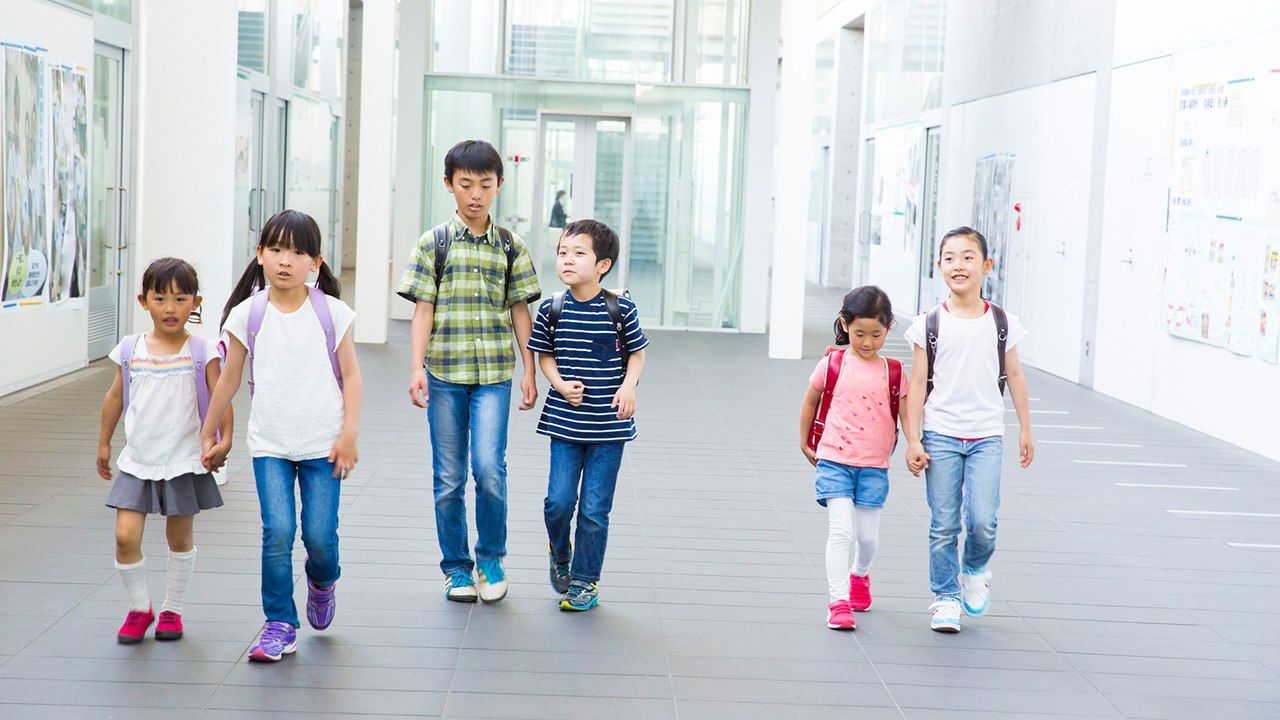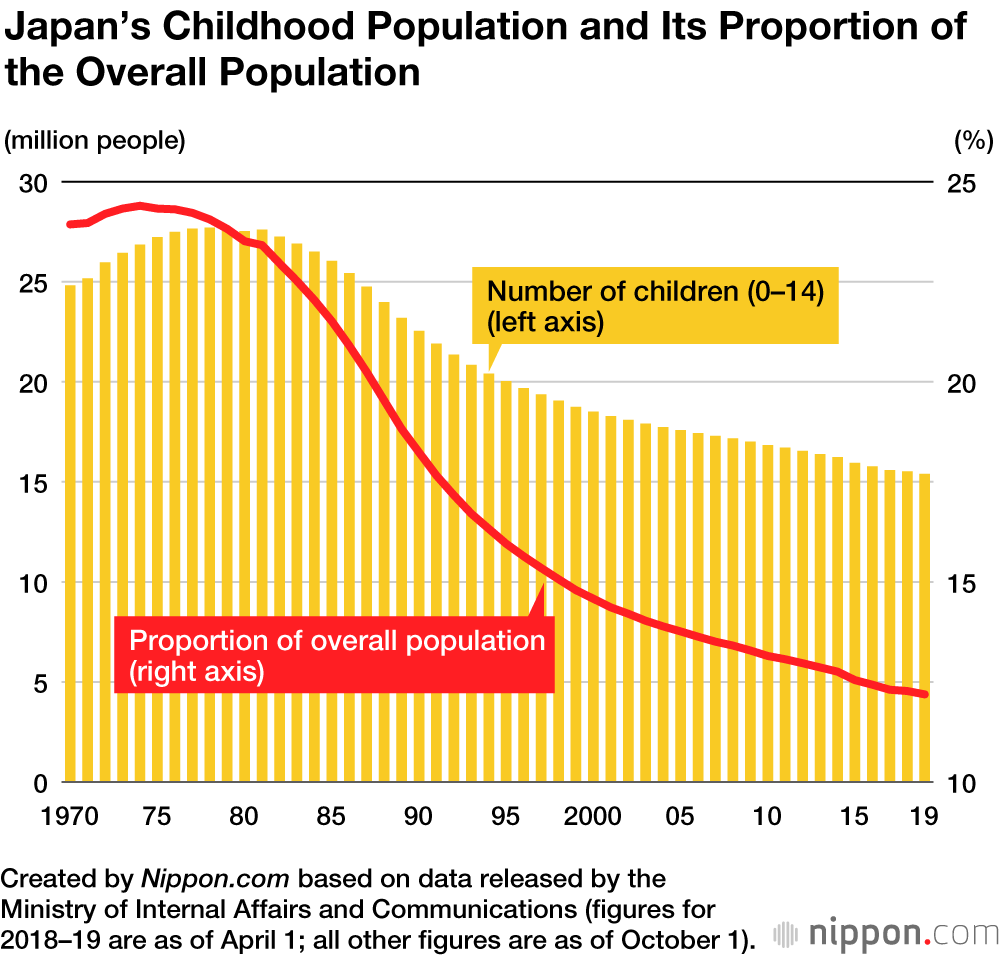
Japan’s Childhood Population Falls for Thirty-Eighth Straight Year
Society- English
- 日本語
- 简体字
- 繁體字
- Français
- Español
- العربية
- Русский
Every year, coinciding with Children’s Day on May 5, Japan’s Ministry of Internal Affairs and Communications releases its estimate for the childhood population, as of April 1. In 2019, the population under 15 years old fell year on year by 180,000, for a total of 15.33 million. Japan’s childhood population has been declining since 1982, and is now at its lowest point in the 50 years for which comparable statistics are available. There are 7.85 million boys and 7.48 million girls. The proportion of children to the overall Japanese population declined 0.2 percentage points to 12.1%. Since 1995, the senior population (65 and over) has been greater than the childhood population.
While the government of Prime Minister Abe Shinzō has pledged to increase the number of children born, there is no easy way to reverse the long-term downward trend, and the efforts of previous administrations have not yielded results.
Breaking down the childhood population into three-year age groups shows that the younger the age, the smaller the respective population, with 12- to 14-year-olds being the most numerous at 3.22 million, followed by 9- to 11-year-olds at 3.21 million, 6- to 8-year-olds at 3.09 million, 3- to-5-year-olds at 2.95 million, and newborns to 2-year-olds at 2.86 million. Tokyo was the only prefecture in Japan that saw a rise in the number of children, while Okinawa remained unchanged, and the other 45 prefectures experienced decreases.
(Translated from Japanese. Banner photo © Pixta.)
